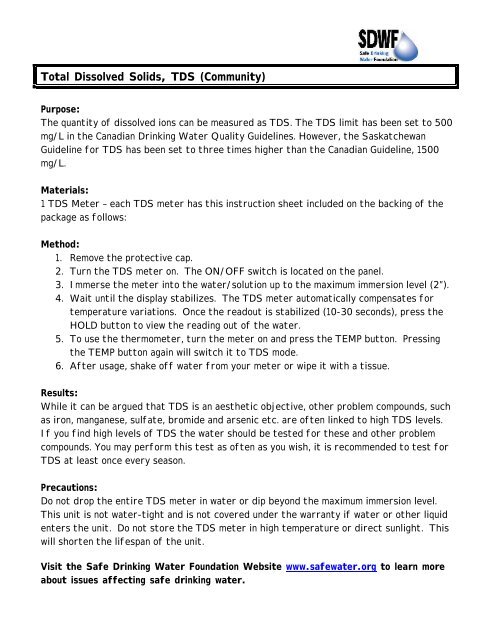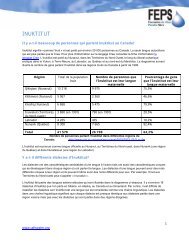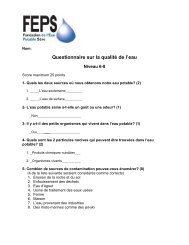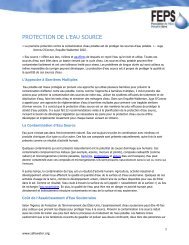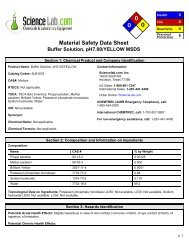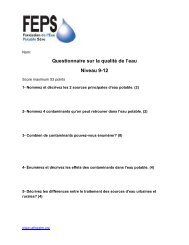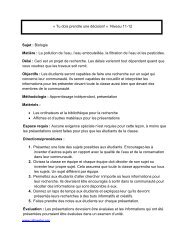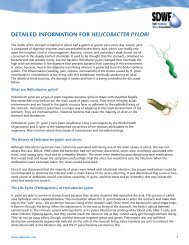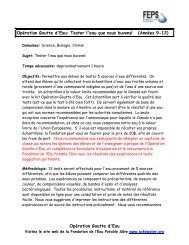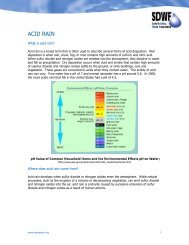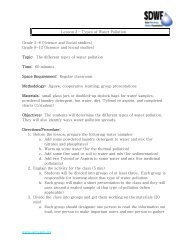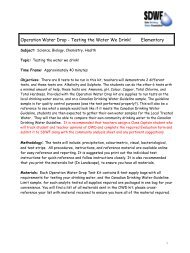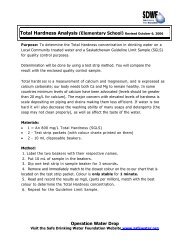Total Dissolved Solids, TDS (Community) - Safe Drinking Water ...
Total Dissolved Solids, TDS (Community) - Safe Drinking Water ...
Total Dissolved Solids, TDS (Community) - Safe Drinking Water ...
You also want an ePaper? Increase the reach of your titles
YUMPU automatically turns print PDFs into web optimized ePapers that Google loves.
<strong>Total</strong> <strong>Dissolved</strong> <strong>Solids</strong>, <strong>TDS</strong> (<strong>Community</strong>)<br />
Purpose:<br />
The quantity of dissolved ions can be measured as <strong>TDS</strong>. The <strong>TDS</strong> limit has been set to 500<br />
mg/L in the Canadian <strong>Drinking</strong> <strong>Water</strong> Quality Guidelines. However, the Saskatchewan<br />
Guideline for <strong>TDS</strong> has been set to three times higher than the Canadian Guideline, 1500<br />
mg/L.<br />
Materials:<br />
1 <strong>TDS</strong> Meter – each <strong>TDS</strong> meter has this instruction sheet included on the backing of the<br />
package as follows:<br />
Method:<br />
1. Remove the protective cap.<br />
2. Turn the <strong>TDS</strong> meter on. The ON/OFF switch is located on the panel.<br />
3. Immerse the meter into the water/solution up to the maximum immersion level (2”).<br />
4. Wait until the display stabilizes. The <strong>TDS</strong> meter automatically compensates for<br />
temperature variations. Once the readout is stabilized (10-30 seconds), press the<br />
HOLD button to view the reading out of the water.<br />
5. To use the thermometer, turn the meter on and press the TEMP button. Pressing<br />
the TEMP button again will switch it to <strong>TDS</strong> mode.<br />
6. After usage, shake off water from your meter or wipe it with a tissue.<br />
Results:<br />
While it can be argued that <strong>TDS</strong> is an aesthetic objective, other problem compounds, such<br />
as iron, manganese, sulfate, bromide and arsenic etc. are often linked to high <strong>TDS</strong> levels.<br />
If you find high levels of <strong>TDS</strong> the water should be tested for these and other problem<br />
compounds. You may perform this test as often as you wish, it is recommended to test for<br />
<strong>TDS</strong> at least once every season.<br />
Precautions:<br />
Do not drop the entire <strong>TDS</strong> meter in water or dip beyond the maximum immersion level.<br />
This unit is not water-tight and is not covered under the warranty if water or other liquid<br />
enters the unit. Do not store the <strong>TDS</strong> meter in high temperature or direct sunlight. This<br />
will shorten the lifespan of the unit.<br />
Visit the <strong>Safe</strong> <strong>Drinking</strong> <strong>Water</strong> Foundation Website www.safewater.org to learn more<br />
about issues affecting safe drinking water.
<strong>Safe</strong> Handling of Materials<br />
Caution must be taken at all times when handling any chemicals, please use an<br />
exhaust/fume hood when performing this test, a very well ventilated area, or<br />
outdoors.<br />
Wear gloves, safety glasses and some type of apron (coveralls) when handling these<br />
materials, please dispose of test strips by putting them back in Ziploc bag, and<br />
discarding in garbage. This test is only recommended for adults.<br />
Visit the <strong>Safe</strong> <strong>Drinking</strong> <strong>Water</strong> Foundation Website www.safewater.org to learn more<br />
about issues affecting safe drinking water.


